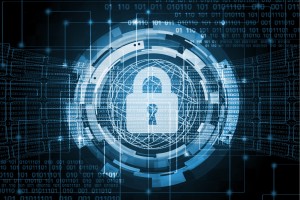The origin of threat assessment
A post by Helen Greenhough, PhD Research Student, Imperial College, Dept of Computing
As an analyst in the defense sector, the adage of threat = capability x intent was widely accepted. But where did it come from?
In the course of my research I was pleased to come across what appears to be the original source of this equation in J. David Singer’s 1958 paper ‘Threat Perception and Armament-Tension Dilemma’ and was originally: ‘Threat-Perception = Estimated Capability x Estimated Intent’ [p94, Singer, J. 1958]. This quasi-formula posits that the perception of a threat can be reduced to zero by either reducing military capability or military intent. In the context of Springer’s paper the equation was part of a discussion on a Cold-War disarmament strategy concluding that weapons, rather than being dismantled or re-purposed, should be transferred to the custody of the UN. Ultimately the Cold-War threat equation was reduced to zero not by removal of estimated capability but through the fall of the Soviet Union – the removal of intent. While Springers’ suggestion of transferring weapons to the UN did not catch on, his equation did and is still in use today in defense circles as part of Threat Assessment activities. Singer’s equation could be viewed as a form of quantitative risk evaluation, which under some frameworks is represented as: risk rating = probability of risk event x impact of risk event. It is not entirely clear if Singer was inspired by the field of risk assessment, or even perhaps vice-versa but the two areas do seem to have much overlap, with the concepts of risk and threat being inherently interchangeable.
- Singer, Threat-Perception and the Armament-Tension Dilemma, The Journal of Conflict Resolution Vol 2, No 1 Studies on Attitudes and Communications, Mar 1958, pp 90-105, http://www.jstor.org/stable/172848
 It is a particularly interesting time in the world of Cyber Security. Just a month ago, President Obama launched the U.S. Cybersecurity National Action Plan. The measures announced include the creation of a Commission on Enhancing National Cybersecurity, a $3.1bn Information Technology Modernization Fund, a new National Cybersecurity Awareness Campaign to empower Americans to better secure their online accounts, and a $19bn investment in cyber during the 2017 Fiscal year. A significant amount of the detail in the announcement concerned the protection of Critical National Infrastructure (CNI). This announcement echoed our own Chancellor of the Exchequer’s
It is a particularly interesting time in the world of Cyber Security. Just a month ago, President Obama launched the U.S. Cybersecurity National Action Plan. The measures announced include the creation of a Commission on Enhancing National Cybersecurity, a $3.1bn Information Technology Modernization Fund, a new National Cybersecurity Awareness Campaign to empower Americans to better secure their online accounts, and a $19bn investment in cyber during the 2017 Fiscal year. A significant amount of the detail in the announcement concerned the protection of Critical National Infrastructure (CNI). This announcement echoed our own Chancellor of the Exchequer’s